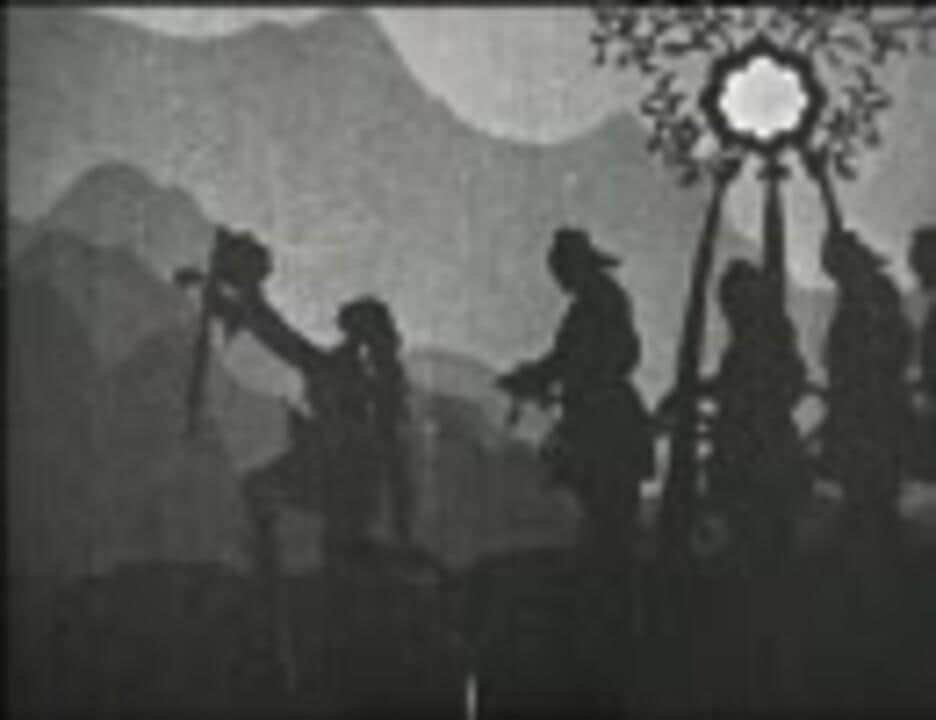Review of "Kokumin Kimigayo": Exploring the Fusion of History and Music

"Kokumin Kimigayo": A Historic Masterpiece of Japanese Animation■ Public Mediatheater ■ Original MediaAnime Original ■ Release date1931 ■Distribution companyBanno Shoten ■ Number of EpisodesEpisode 1 ■ DirectorNobuo Ofuji ■ ProductionChiyogami Film Company ■ Storydetail As the record plays, the words "Kimigayo" appear, a chrysanthemum-shaped iris opens, and the paper of Izanami and Izanagi appears, creating the eight great provinces of Japan. The record is sung by a male chorus, the subtitles "Kimigayo" disappear, and the Ama-no-Iwato appears. Various gods gather and perform a Kagura dance, and Takejikarao pushes open the rock door where Amaterasu Omikami is hiding. When the cloud-shaped iris opens, a golden black kite lands on the bow. The light emitted from the black kite becomes the eighty mirrors. ■Explanationdetail A disc-type Pathé talkie synchronized with Columbia Records' "National Anthem Kimigayo" (A-18[32999]). ■Detailed review"Kokumin Kimigayo" is a Japanese animated film released in 1931, and is highly regarded for its historical and artistic value. This work reflects the technology and culture of the time, and the story, especially based on Japanese mythology, has visual beauty and deep meaning. First, let's look at the story. "Kokumin Kimigayo" begins with the words "Kimigayo" appearing in sync with a record. This production simultaneously stimulates the senses of sight and sound, leaving a strong impression on the audience. The scene that follows, in which a chrysanthemum-shaped iris opens, revealing the paper of Izanami and Izanagi, creating the eight great provinces of Japan, is one of the first attempts to express the world of mythology through animation, and is particularly noteworthy for its beauty and creativity. In the second stanza, the lyrics of "Kimigayo" are performed by a male chorus, and the subtitles disappear, transitioning to the scene of the Ama-no-Iwato cave. This section depicts an important episode from Japanese mythology, in which the gods gather together to perform the Kagura dance, and Takejikarao pushes open the cave into which Amaterasu Omikami was hiding. This scene is not only a reenactment of the myth, but also has a deep meaning, reflecting the spirituality and beliefs of the Japanese people at that time. In the third section, the cloud-shaped iris opens and a golden kite lands on the bow. The light emitted from the kite becomes eighty mirrors, which is not only visually beautiful but also emphasizes the symbolism of the myth. This part plays an important role in connecting the world of myth with the real world, and deeply moves the audience. "Kokumin Kimigayo" is composed of four sections, each with a different theme and visual expression. This structure evokes a variety of emotions and thoughts in the audience, adding depth to the work as a whole. In addition, the film's importance and influence can be seen from the fact that it was always screened at the opening of the screening. ■ Technical evaluation"Kokumin Kimigayo" was produced using a disc-type Pathé talkie, reflecting the state of the art at the time. The sound, synchronized with Columbia Records' "Kokumin Kimigayo" (A-18[32999]), was integrated with the visual expression, leaving a strong impression on the audience. This technology had a major impact on the development of later animated films. It was also highly acclaimed as a small-format film sold commercially by Banno Shoten, and was made available to the general public in a format that was easy to watch. This marked the beginning of the widespread popularity of Japanese animation films at the time and their establishment as part of Japanese culture. ■ Cultural significance"Kokumin Kimigayo" has a story based on Japanese mythology, and reflects the spirituality and beliefs of the Japanese people at that time. This work not only recreates mythology, but also portrays "Kimigayo" as a symbol of the nation and people, eliciting deep emotion and sympathy from the audience. It also played the role of the opening film at the screening, and was positioned as part of the cultural event. Furthermore, this work has a great historical value in Japanese animation films and had a major impact on the development of later animation films. In particular, its visual beauty and meaningful story left a strong impression on audiences and it is now valued as a cultural heritage. ■ Recommendations and ratings"Kokumin Kimigayo" is a historical masterpiece of Japanese animation and is highly regarded for its artistic and cultural significance. The film has a visual beauty and a meaningful story that leaves a strong impression on the audience. It also reflects the technology and culture of the time, and had a great influence on the development of later animation films. The first reason to recommend this film is its visual beauty. The beauty of the mythological world depicted in animation, such as chrysanthemum-shaped irises, cloud-shaped irises, and golden black kites, deeply moves the audience. Also noteworthy is the integrated audio and visual effects, such as the lyrics of "Kimigayo" sung by a male chorus and the Kagura dance. Secondly, it is a story with deep meaning. The story is based on Japanese mythology and reflects the spirituality and beliefs of the Japanese people at that time, eliciting deep empathy from the audience. It also has cultural significance by depicting "Kimigayo" as a symbol of the nation and people. Thirdly, there is the technical evaluation. The integration of sound and vision using the disc-type Pathé talkie reflected the state of the art at the time and had a major impact on the development of later animated films. It was also highly acclaimed as a small film sold commercially by Banno Shoten, and was provided in a format that was easily accessible to the general public. For these reasons, I recommend "Kokumin Kimigayo" as a historical masterpiece of Japanese animation, combining visual beauty, a meaningful story, technical merit, and cultural significance. It is a must-see not only for animation fans, but also for those interested in history and culture. |
>>: "Suzumisen" review: A fascinating story and deep characters
Recommend
The Jujutsu Kaisen: Kagyama: Jade Origami will be released as a theatrical compilation in 2025
Adapted from the popular hot-blooded manga of the...
The appeal and reviews of "STRAIT JACKET": A deep dive into the world of magic and fighting
Straight Jacket: A battle between science and mag...
Birds of Prey's opening week collapse marks worst start for DC movie universe
The opening weekend box office of the new DC movi...
This is Katsushika-ku Kameari Park Police Box: A thorough review of the touching story of Ryo-san and his loyal dog Lucky! Can they avoid the massive Kameari encirclement?
The appeal and evaluation of "This is the Ka...
The appeal and reviews of "Tayutama - Kiss on my Deity": A story woven by a sacred kiss
Tayutama -Kiss on my Deity- Review and Recommenda...
Atelier Ryza to be produced into an animation to be aired in summer 2023
The first work of "Atelier Ryza" has be...
The appeal and reviews of "My Roommate is My Knee, Sometimes, on My Head": The pinnacle of healing anime
"My roommate is sometimes on my lap, sometim...
Trigger officially announced that it will release new animations such as "Stocking with Garterbelt" in July
Japanese animation company TRIGGER announced toda...
The second part of the live-action movie "Kakegurui" has a new trailer and will be released in May
The second live-action movie of the super popular...
"Fist of the North Star" musical heroine Yulia's cast announced, performances to begin in December
The new musical of the classic anime "Fist o...
Zhou Xun, Chen Kun, Shu Qi Cosplay in the second dimension, wearing wigs and pouting to act cute and funny
Recently, Chen Kun posted a group photo of the co...
Is a sequel confirmed? The Super Mario Bros. Movie will have a post-credits Easter egg
In an interview with CBR, Mario's voice actor...
Hayao Miyazaki's "How Do You Live?" won the Golden Globe Award for Best Animated Film, the first time for a Japanese film
The Golden Globe Awards ceremony was held on Janu...
"Changjin Lake" box office exceeded 3 billion and broke many records
According to the official news released by Maoyan...
New Batman Pattinson: "Tenet" is too complicated. No one except Nolan can make such a movie
Recently, Christopher Nolan's masterpiece &qu...









